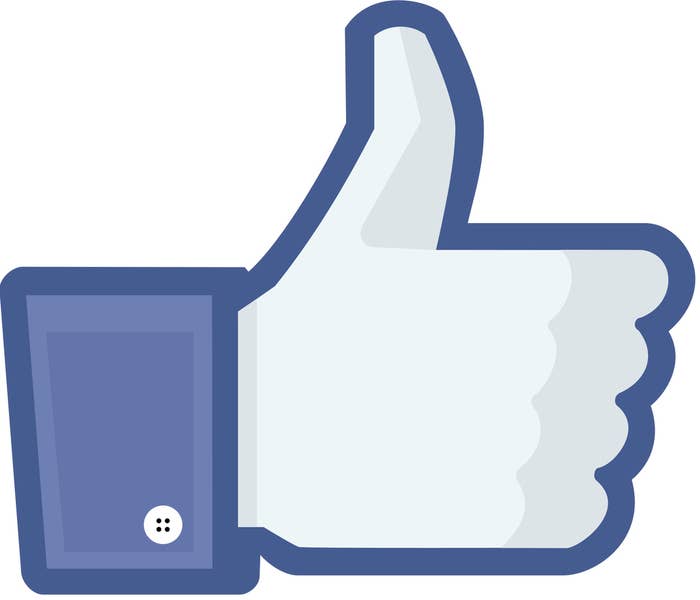
Facebook hopes Graph Search will transform the social network into the dominant force on the internet, harnessing the powers of Yelp, TripAdvisor, and LinkedIn all in one. At its core, Graph Search is a recommendations engine, allowing users to search restaurants, movies, companies, doctors, hotels — all based on what friends have "liked." Its potential for advertising, Facebook's main post-IPO interest, is monumental. The only problem? Not everyone "likes."
Currently, searching for recommendations through Graph Search retrieves a loosely connected assortment of results, varying from your friend's amateur rock band to coffee shops your friends were forced to "like" in order to get free Wi-Fi. In other words, Graph Search, as it exists now, might not know much about what your friends actually enjoy.
The earliest known references to the "like" button surfaced in a series of internal emails concerning "Project Codename Props," sent in July 2007. Other ideas for users to express their approval across Facebook included star ratings, plus and minus signs, and a thumbs-up icon (low on the list since it is considered an offensive gesture in some countries). Developers temporarily decided on an "awesome" button, and later that month at a hackathon, a group of Facebook employees created a prototype.
Unable to decide on a name for the feature, developers played around with the language. "Like" was mentioned as a universally understood term, but Andrew "Boz" Bozworth, the director of engineering at Facebook, later explained on Quora that "['Like'] receive[d] a lukewarm response. We've become somewhat attached to awesome and, comparatively, 'like' seems bland."
On Nov. 12, the team showed it to Zuckerberg, who didn't approve. According to Bozworth, Zuckerberg worried it would "cannibalize" the share function and conflict with Beacon, a failed advertising initiative by the company. Zuckerberg was also concerned as to whether "likes" should be public or private. And so "like" was put on hold.
It wasn't until February 2009 that Facebook officially launched the iconic button. "There's a lot of content my friends have shared on Facebook that's pretty awesome," wrote Leah Pearlman, who was part of Operation Codename Props, making a nod to the original name.
One controversial theory suggests Zuckerberg was inspired by a FriendFeed "like" button and wanted to follow suit. Yet given that FriendFeed's was launched three and a half months after the start of "Project Props" and just two weeks before Zuckerberg rejected the idea at a developer meeting makes that scenario unlikely.
As for word choice, "like" is no accident. "Liking Studies" is a popular category in market research and one of the industry's most important metrics to determine how ads resonate with consumers. In advertising speak, "liking a product" is the crucial step between product awareness and actual purchasing. The successes of Super Bowl ads, for instance, are ranked along a likability index within the industry.
Facebook declined to comment on Zuckerberg's change of heart on the "like" button, but it's a safe bet that Zuckerberg eventually saw what so many on Madison Avenue saw before him: advertising potential.
View this video on YouTube
Nielsen ranked Doritos' ad as the Most Liked Commercial of Super Bowl XLVII.
For Facebook, the "like" is also an evolution of the site's "fan" feature. In November 2007, the same month a small number of users were given a sneak peek of the "like" button through an accidental site update, Facebook launched "Pages" for businesses, products, and celebrities. Users could become "fans" of pages, and advertisers could use that information to create social ads that, in turn, targeted their fans and their fans' friends. That's when everything changed.
The "Fan" feature was short-lived, however. Shortly after its adoption, Facebook realized "becoming a fan" was too weighty a prospect for a lot of users. "Liking," on the other hand, is much less intimidating.
But today, Facebook is up against the unresolved issue of user behavior: How does Facebook get users to "like" things? Facebook has created workarounds, allowing companies to purchase "likes" via advertising or to offer discounts or special offers if you tell a company like Seamless you "like" its status update, which has the secondary effect of diluting how those "likes" are seen. When a friend recently "liked" BlackBerry, I doubted she had hunted it down out of her love of the brand. I suspected an ulterior motive.
It would seem, in fact, that Zuckerberg's original worry — that public "liking" would discourage people from actually opening up to Facebook — was spot-on.
Looking ahead, there are rumors of a "want" button, which could be valuable to businesses, particularly around holidays. There is even talk of a "purchased" button, which would give people much loved bragging rights. Both have even more direct and powerful advertising value but would be tacit admissions of Facebook's continued commercialization. And it's not clear how, if Facebook is struggling to get users to "like," it could convince them to do something more explicitly in the service of Facebook's business.
And for those holding out hope for a "dislike" button, it seems vanishingly unlikely. Some have argued the company has yet to deliver the feature for fear of insulting lucrative advertisers, speculation that Facebook engineer Tom Whitnah denied on Quora. "I've never heard any talk of its impact on advertisers and it seems all the speculation I've read about advertisers driving this decision is as far from the truth as I can imagine," he wrote.

